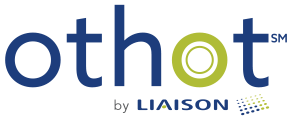As the Data Curator at Othot, I am responsible for the management and acquisition of data. Our data comes from a diverse array of sources – clients, public databases, and Othot-generated and refined information. Data, in this day and age, has become a commodity and is essential for predictive analytics. In an enterprise analytics class taught by Othot CEO, Andy Hannah, at the University of Pittsburgh, the refrain was simple – “data before analytics.”
While that is fairly intuitive, there is one piece of terminology related to predictive analytics has always stumped me: data mining. Data mining is defined as the extraction of patterns from large data sets via statistical methods, seems to be a misnomer. After all, to borrow a common illustration, one doesn’t “rock mine” for gold. I guess data mining is a more suitable term than “knowledge extraction from data using statistics,” but to each their own.
I’d like to focus on the actual mining – not the analysis connotation – but rather the discovery and synthesis of data from disparate sources found all around us, either on the web or buried in enterprise systems. Data is everywhere, and it’s growing. At Othot, we seek to derive the highest value insight from data, but in order to do that you need high value data.
Data valuation is something that many companies have struggled with, as putting data on the books isn’t as simple as writing off depreciation on that big old combine in the plant. This is a fairly new concept, and with that comes some growing pains.
An article published last year on CIO.com asserted that “less than 5 percent of organizations calculate the value of their data, measure its benefits, or properly inventory their information, based on client interviews.” This is an alarmingly small percentage, but it is to be expected when the concept is still being refined.
The true challenge of data valuation, however, lies in understanding specifically what impact data has had in the past for your organization and predicting how valuable it will be in the future. When companies understand how valuable a data asset is, they will work harder to thoroughly inventory and manage it as an asset. At Othot, we have developed a framework to help organizations accomplish this feat. Our data value criteria enable organizations to finally see the true value of their data, and how it can be used for predictive analytics (the fun part!).
Wherever your organization may be on the road to becoming an analytical competitor, remember the most important phrase – data before analytics.
Sources:
http://www.cio.com/article/2375573/leadership-management/cios-consider-putting-a-price-tag-on-data.html
http://www.statsoft.com/Textbook/Data-Mining-Techniques
Mark Doman



